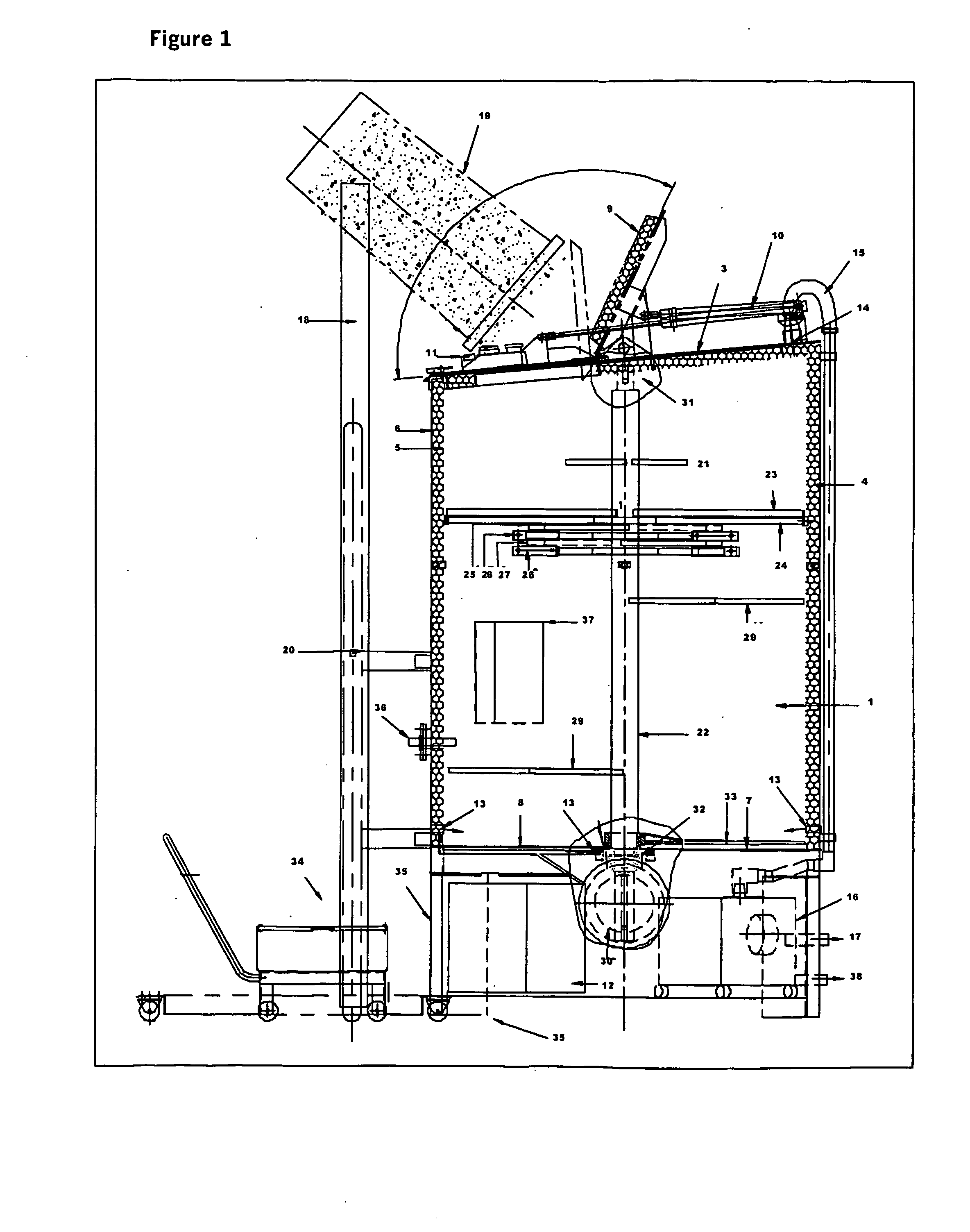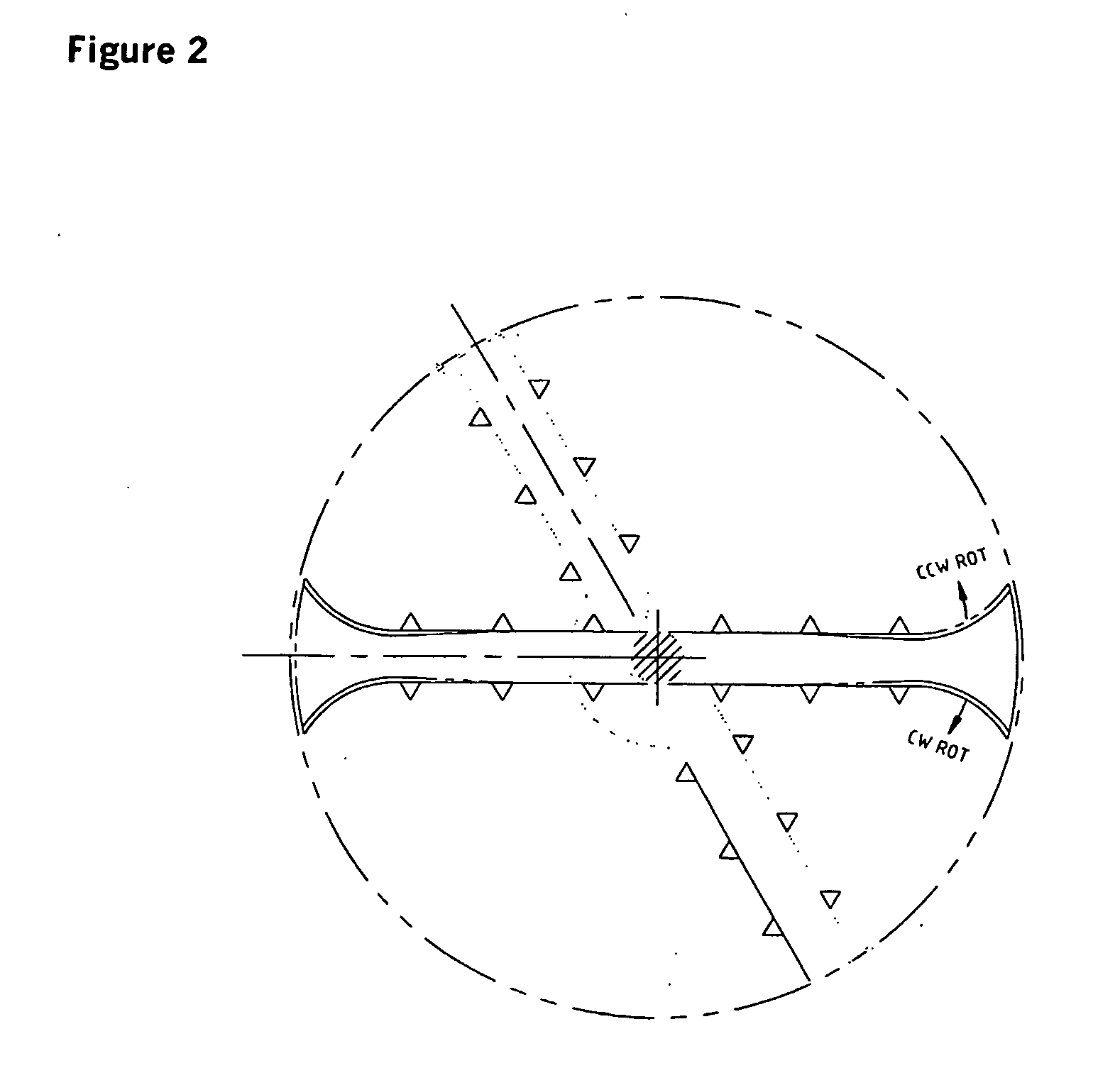Organic waste treatment apparatus
a waste treatment and organic technology, applied in the field of food waste treatment and novel waste treatment apparatus, can solve the problems of waste disposal cos
- Summary
- Abstract
- Description
- Claims
- Application Information
AI Technical Summary
Benefits of technology
Problems solved by technology
Method used
Image
Examples
example 1
Materials and Methods
Description of the Apparatus and Process.
[0052] A trial was conducted to objectively characterise the performance of an organic waste treatment apparatus according to FIG. 1, in terms of processing performance (ie retention time and processing capacity), product quality and stability, and associated environmental impacts (eg odour, pests and leachate).
[0053] The apparatus was designed for on-site conversion of food waste into a saleable composted waste material product, which would be capable of being operated by a single user.
[0054] The apparatus comprised a composting chamber with an internal volume of 2.4 m3. The apparatus was provided with an analogue temperature feedback mechanism (comprising a digital thermostat controller) controlled the injection of compressed air from two reciprocating air compressors via a ring main installed on the bottom outer perimeter of the composting chamber and into a bearing housing at the base of a central rotatable shaf...
PUM
| Property | Measurement | Unit |
|---|---|---|
| volume | aaaaa | aaaaa |
| volume | aaaaa | aaaaa |
| volume | aaaaa | aaaaa |
Abstract
Description
Claims
Application Information
 Login to View More
Login to View More - R&D
- Intellectual Property
- Life Sciences
- Materials
- Tech Scout
- Unparalleled Data Quality
- Higher Quality Content
- 60% Fewer Hallucinations
Browse by: Latest US Patents, China's latest patents, Technical Efficacy Thesaurus, Application Domain, Technology Topic, Popular Technical Reports.
© 2025 PatSnap. All rights reserved.Legal|Privacy policy|Modern Slavery Act Transparency Statement|Sitemap|About US| Contact US: help@patsnap.com



